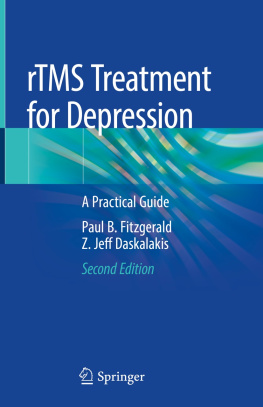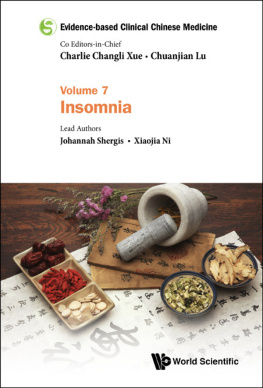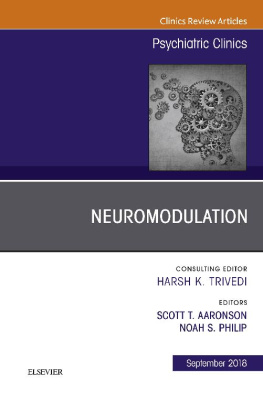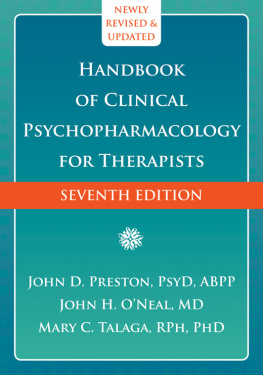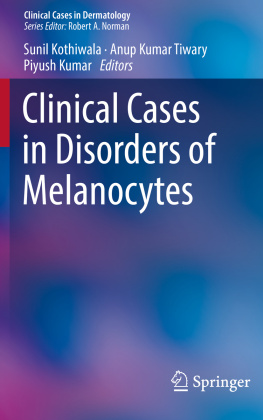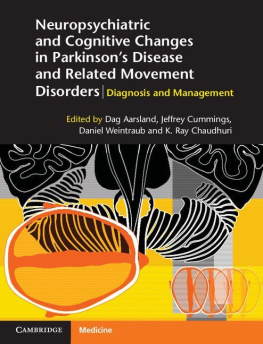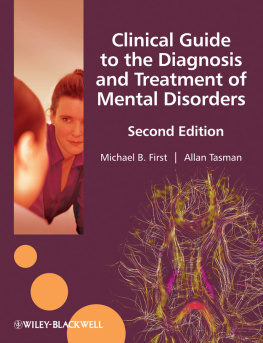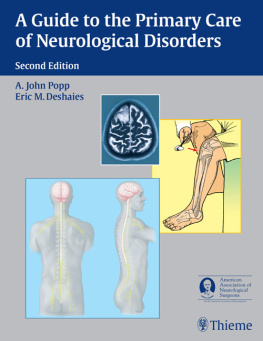A Clinical Guide to Transcranial Magnetic Stimulation
A Clinical Guide to Transcranial Magnetic Stimulation
EDITED BY
Paul E. Holtzheimer, MD
Geisel School of Medicine at Dartmouth Lebanon, NH
William M. McDonald, MD
Emory University School of Medicine Atlanta, GA


Oxford University Press is a department of the University of
Oxford. It furthers the Universitys objective of excellence in research, scholarship, and education by publishing worldwide.
Oxford New York
Auckland Cape Town Dar es Salaam Hong Kong Karachi
Kuala Lumpur Madrid Melbourne Mexico City Nairobi
New Delhi Shanghai Taipei Toronto
With offices in
Argentina Austria Brazil Chile Czech Republic France Greece
Guatemala Hungary Italy Japan Poland Portugal Singapore
South Korea Switzerland Thailand Turkey Ukraine Vietnam
Oxford is a registered trademark of Oxford University Press in the UK and certain other countries.
Published in the United States of America by
Oxford University Press
198 Madison Avenue, New York, NY 10016
Oxford University Press 2014
All rights reserved. No part of this publication may be reproduced, stored in a retrieval system, or transmitted, in any form or by any means, without the prior permission in writing of Oxford University Press, or as expressly permitted by law, by license, or under terms agreed with the appropriate reproduction rights organization. Inquiries concerning reproduction outside the scope of the above should be sent to the Rights Department, Oxford University Press, at the address above.
You must not circulate this work in any other form and you must impose this same condition on any acquirer.
Library of Congress Cataloging-in-Publication Data
A Clinical Guide to Transcranial Magnetic Stimulation / edited by Paul E. Holtzheimer, William M. McDonald.
p. ; cm.
Includes bibliographical references.
ISBN 9780199926480 (alk. paper)
I. Holtzheimer, Paul E., editor of compilation. II. McDonald, William M., 1953editor of compilation.
[DNLM: 1. Mental Disorderstherapy. 2. Transcranial Magnetic Stimulationmethods. WM 400]
RC480.53
616.8906dc23
2013034522
The science of medicine is a rapidly changing field. As new research and clinical experience broaden our knowledge, changes in treatment and drug therapy occur. The author and publisher of this work have checked with sources believed to be reliable in their efforts to provide information that is accurate and complete, and in accordance with the standards accepted at the time of publication. However, in light of the possibility of human error or changes in the practice of medicine, neither the author, nor the publisher, nor any other party who has been involved in the preparation or publication of this work warrants that the information contained herein is in every respect accurate or complete. Readers are encouraged to confirm the information contained herein with other reliable sources, and are strongly advised to check the product information sheet provided by the pharmaceutical company for each drug they plan to administer.
9 8 7 6 5 4 3 2 1
Printed in the United States of America
on acid-free paper
Contents
Scott Aaronson, MD
Sheppard and Enoch Pratt Hospital
Towson, Maryland
Daniel M. Blumberger, MD
Temerty Centre for Therapeutic Brain
Intervention
Centre for Addiction and Mental Health
University of Toronto
Toronto, Ontario, Canada
Mario A. Cristancho, MD
Neuromodulation Program, Department of
Psychiatry
University of Pennsylvania
Philadelphia, Pennsylvania
Zafiris J. Daskalakis, MD, PhD
Temerty Centre for Therapeutic Brain
Intervention
Centre for Addiction and Mental Health
University of Toronto
Toronto, Ontario, Canada
Charles M. Epstein, MD
Department of Neurology
Emory University School of Medicine
Atlanta, Georgia
Paul Fitzgerald, MD, PhD
Monash Alfred Psychiatry Research Centre
Melbourne, Australia
Mark S. George, MD
Stimulation Laboratory
SC Brain Imaging Center of Excellence
Medical University of South Carolina
Charleston, South Carolina
Paul E. Holtzheimer, MD
Director, Mood Disorders Service, Geisel
School of Medicine at Dartmouth
Lebanon, NH
Jean-Pascal Lefaucheur, MD, PhD
Hpital Henri Mondor
Department of Physiology
University of Paris
Paris, France
Sarah H. Lisanby, MD
Department of Psychiatry & Behavioral
Sciences
Duke University School of Medicine
Durham, North Carolia
Colleen Loo, MD
School of Psychiatry
University of New South Wales
Sydney, Australia
Daniel F. Maixner, MD
Department of Psychiatry
University of Michigan
Ann Arbor, Michigan
W. Vaughn McCall, MD, MS
Department of Psychiatry and Health
Behavior
Medical College of GeorgiaGeorgia
Regents University
Augusta, Georgia
Shawn M. McClintock, PhD
Psychiatry and Behavioral Sciences
Duke University School of
Medicine
Durham, North Carolina
William M. McDonald, MD
J.B. Fuqua Chair for Late-Life Depression
Department of Psychiatry and Behavioral
Sciences
Emory University School of Medicine
Michelle L. Moyer, MD
Neuromodulation Program
Department of Psychiatry
Rowan University School of Osteopathic
Medicine
Stratford, New Jersey
John P. OReardon, MD
Neuromodulation Program
Department of Psychiatry
Rowan University School of Osteopathic
Medicine
Stratford, New Jersey
Guy Potter, PhD
Department of Psychiatry and Behavioral
Sciences
Duke University School of Medicine
Durham, North Carolina
Simone Rossi, MD, PhD
Azienda Ospedaliera-Universitaria Senese
Brain Investigation &
Neuromodulation Lab
Policlinico Le Scotte
Sienna, Italy
Peter B. Rosenquist, MD
Department of Psychiatry and Health
Behavior
Medical College of GeorgiaGeorgia
Regents University
Augusta, Georgia
Natasha Radhu
Temerty Centre for Therapeutic Brain
Intervention
Centre for Addiction and Mental Health
University of Toronto
Toronto, Ontario, Canada
Joseph J. Taylor, MD, PhD
Brain Stimulation Laboratory
SC Brain Imaging Center of Excellence
Medical University of South Carolina
Charleston, South Carolina
Anosha Zanjani
Temerty Centre for Therapeutic Brain
Intervention
Centre for Addiction and Mental Health
University of Toronto
Toronto, Ontario, Canada
Transcranial Magnetic Stimulation
The first studies of transcranial magnetic stimulation (TMS) were performed in 1985 by Anthony Barker and his colleagues at the Royal Hallamshire Hospital in Sheffield, England. These studies demonstrated that TMS could induce muscle movements in the hand when applied to the cortical motor strip (Barker, Jalinous, & Freeston, 1985). These early studies provided support for a noninvasive method that could focally stimulate underlying cortical pathways and were the foundation for research into the stimulation of cortical pathways involved in a number of disease processes. Barkers original research was based on single-pulse TMS where a single stimulus was delivered to a specific brain region. Expanding on this, the technology developed to allow a device to deliver multiple stimuli over a short period of time, that is, repetitive TMS (rTMS). rTMS was shown to have lasting effects on cortical excitability that persisted beyond the actual stimulus delivery (Chen et al., 1997; Maeda, Keenan, Tormos, Topka, & Pascual-Leone, 2000). Given the ability of this treatment to modulate cortical activity in a focal way, focus was soon placed on the use of this technique to potentially ameliorate neuropsychiatric disorders, with the earliest studies attempting to treat depression (George et al., 1995; Hoflich, Kasper, Hufnagel, Ruhrmann, & Moller, 1993; Kolbinger, Hoflich, Hufnagel, & et al., 1995; Pascual-Leone, Rubio, Pallardo, & Catala, 1996). Since these first studies, numerous clinical trials of rTMS for the treatment of depression (and other psychiatric disorders) have been conducted.
Next page

